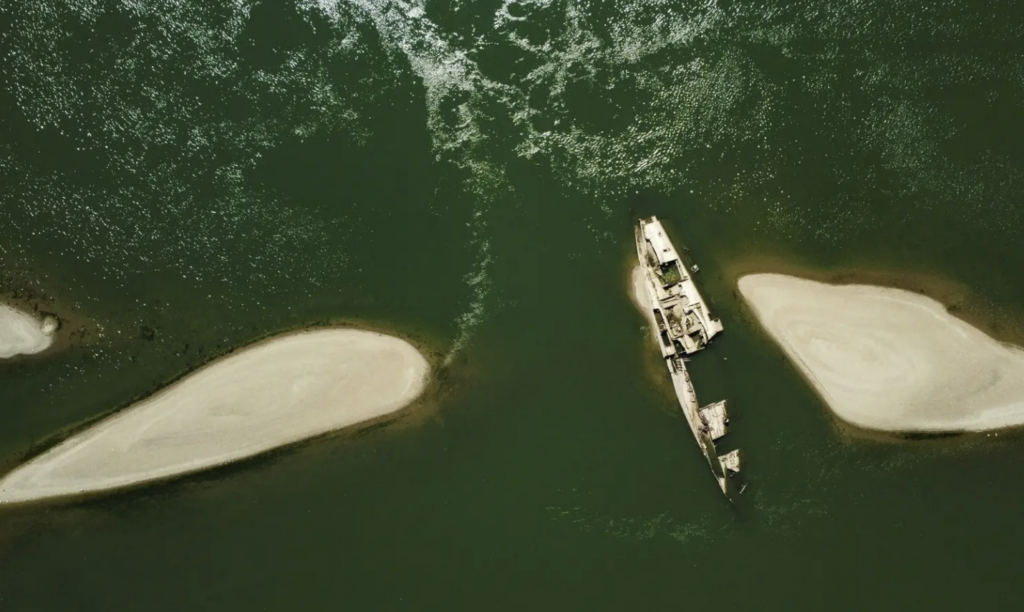Like ghosts resurfacing after spending years forgotten in the inky depths, the wrecks of dozens of German warships loaded with explosives and sunk during the Second World War can be seen in the waters of the Danube near the Serbian port city of Prahovo.
Many of the 20 shipwrecks still contain tons of ammunition and explosives and are a danger to shipping, RTBF reports.
As a result of Europe's worst drought in years, the Danube is at one of its lowest levels in nearly a century, leaving the ships exposed. They were among hundreds sunk along the Danube by Nazi Germany's Black Sea Fleet in 1944 as it retreated in the face of advancing Soviet forces.
Scattered along the riverbed, some still have turrets, command decks, broken masts and twisted hulls, while others are largely submerged under sandbanks.
Months of drought and record temperatures have blocked river traffic in other parts of Europe, including Germany, Italy and France. In Serbia, authorities have resorted to dredging to keep the Danube's shipping lanes open.
Related News
- Low Rhine levels risk leaving German waterways unnavigable
- Four-hour long 'traffic jams' on Albert Canal due to drought
At Prahovo, some of these carcasses have reduced the navigable section of the Danube from 180 metres to just 100 metres.
In March, the Serbian government issued a tender for the recovery of the hulls and the removal of ammunition and explosives. The cost of the operation was estimated at €29 million.

